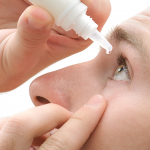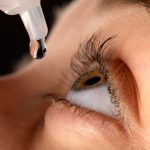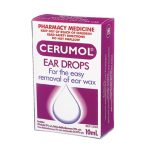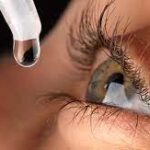15 Most Common Side Effects Of Prednisolone Eye Drops
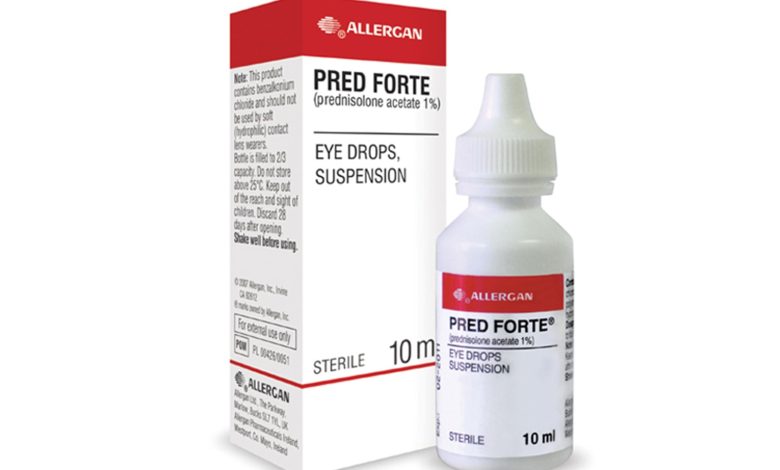
Prednisolone eye drops are a type of medication used to treat various eye conditions such as inflammation, allergy, and infection. The medication is a corticosteroid that helps reduce inflammation and swelling in the eye.
While it is an effective treatment, prednisolone eye drops can also have side effects. In this article, we will discuss in detail the most common prednisolone eye drops side effects.
1. Blurred Vision
One of the most common side effects of prednisolone eye drops is blurred vision. This side effect is typically mild and temporary, and it usually goes away on its own after a few minutes. However, in some cases, the blurriness can be more severe and can last longer. If this occurs, it is important to consult your eye doctor immediately.
2. Eye Irritation
Prednisolone eye drops can cause eye irritation, including burning, stinging, itching, and redness. These side effects can be uncomfortable and may interfere with daily activities such as reading and driving. In some cases, eye irritation may be severe enough to cause swelling and inflammation of the eye.
3. Eye Infection
Prednisolone eye drops can increase the risk of developing an eye infection. This is because the medication can weaken the immune system, making it easier for bacteria, viruses, and fungi to infect the eye. Symptoms of an eye infection may include redness, swelling, discharge, and pain. If you experience any of these symptoms, it is important to seek medical attention immediately.
4. Glaucoma
Another potential side effect of prednisolone eye drops is an increased risk of glaucoma. Glaucoma is a condition that causes damage to the optic nerve and can lead to vision loss or blindness. While prednisolone eye drops are generally safe, they can increase pressure in the eye, which can worsen glaucoma. If you have glaucoma, it is important to discuss the risks and benefits of using prednisolone eye drops with your eye doctor.
5. Cataracts
Prednisolone eye drops can also increase the risk of developing cataracts. Cataracts are a clouding of the lens in the eye that can cause vision loss or blindness. While cataracts can develop for a variety of reasons, the use of prednisolone eye drops can increase the risk of their development. If you have a history of cataracts, it is important to discuss the risks and benefits of using prednisolone eye drops with your eye doctor.
6. Headaches
Some people may experience headaches after using prednisolone eye drops. These headaches are typically mild and temporary and usually go away on their own after a short period of time. However, in some cases, the headaches may be more severe and may require medical attention.
7. Increased Sensitivity to Light
Prednisolone eye drops can increase sensitivity to light. This can cause discomfort when exposed to bright lights or sunlight. In some cases, the increased sensitivity to light can be severe and may require the use of sunglasses or other forms of eye protection.
8. Dry Eyes
Prednisolone eye drops can also cause dry eyes. Dry eyes occur when the eyes do not produce enough tears to keep them lubricated. This can cause discomfort, irritation, and redness in the eyes. If you experience dry eyes while using prednisolone eye drops, it is important to discuss the issue with your eye doctor.
9. Increased Blood Sugar Levels
Prednisolone eye drops can increase blood sugar levels in some people. This is because prednisolone is a steroid medication, and steroids can affect the body’s ability to regulate blood sugar. If you have diabetes or are at risk for developing diabetes, it is important to monitor your blood sugar levels closely while using prednisolone eye drops.
10. Mood Changes
Prednisolone eye drops can also cause mood changes, such as anxiety, depression, and irritability. These side effects can be more common in people who are already prone to mood disorders or who have a history of psychiatric conditions. If you experience mood changes while using prednisolone eye drops, it is important to discuss them with your healthcare provider.
11. Allergic Reactions
In rare cases, prednisolone eye drops can cause an allergic reaction. Symptoms of an allergic reaction may include itching, hives, swelling, and difficulty breathing. If you experience any of these symptoms, it is important to seek medical attention immediately.
12. Delayed Healing
Prednisolone eye drops can also delay the healing process in the eye. This is because the medication can suppress the immune system, which can slow down the body’s natural healing process. If you have a wound or injury in the eye, it is important to discuss the risks and benefits of using prednisolone eye drops with your eye doctor.
13. Ocular Hypertension
Ocular hypertension is a condition that occurs when there is increased pressure in the eye. Prednisolone eye drops can increase the risk of ocular hypertension, which can lead to glaucoma and other eye problems. If you have a history of ocular hypertension or glaucoma, it is important to discuss the risks and benefits of using prednisolone eye drops with your eye doctor.
14. Elevated Intraocular Pressure
Elevated intraocular pressure is another potential side effect of prednisolone eye drops. This occurs when there is increased pressure inside the eye, which can cause vision problems and other eye-related issues. If you experience elevated intraocular pressure while using prednisolone eye drops, it is important to discuss the issue with your eye doctor.
15. Corneal Perforation
In rare cases, prednisolone eye drops can cause corneal perforation. This occurs when there is a hole or tear in the cornea, which can cause vision loss and other complications. If you experience any symptoms of corneal perforation, such as severe pain or sudden vision loss, it is important to seek medical attention immediately.
Conclusion
Prednisolone eye drops are a commonly used medication for treating various eye conditions. While they are generally safe and effective, they can also have side effects. The most common side effects of prednisolone eye drops include blurred vision, eye irritation, eye infection, glaucoma, cataracts, headaches, increased sensitivity to light, dry eyes, increased blood sugar levels, mood changes, allergic reactions, delayed healing, ocular hypertension, elevated intraocular pressure, and corneal perforation. If you experience any of these side effects, it is important to discuss them with your healthcare provider. It is also important to follow the instructions provided by your doctor or pharmacist and to use the medication only as directed.

